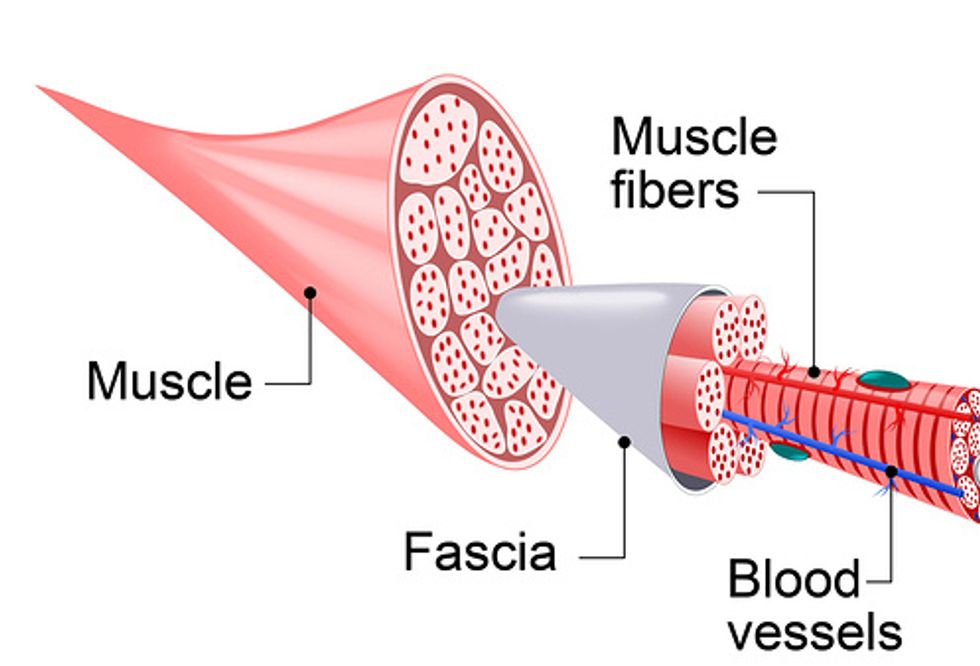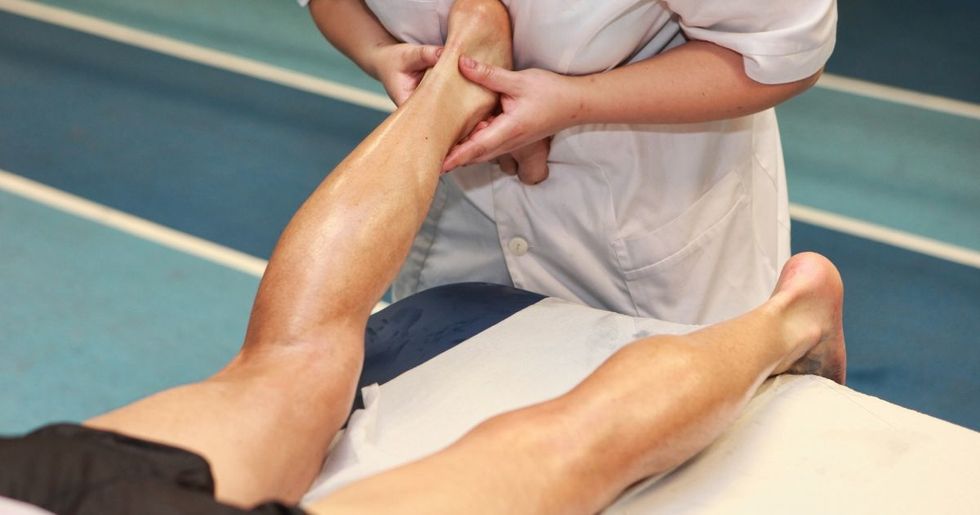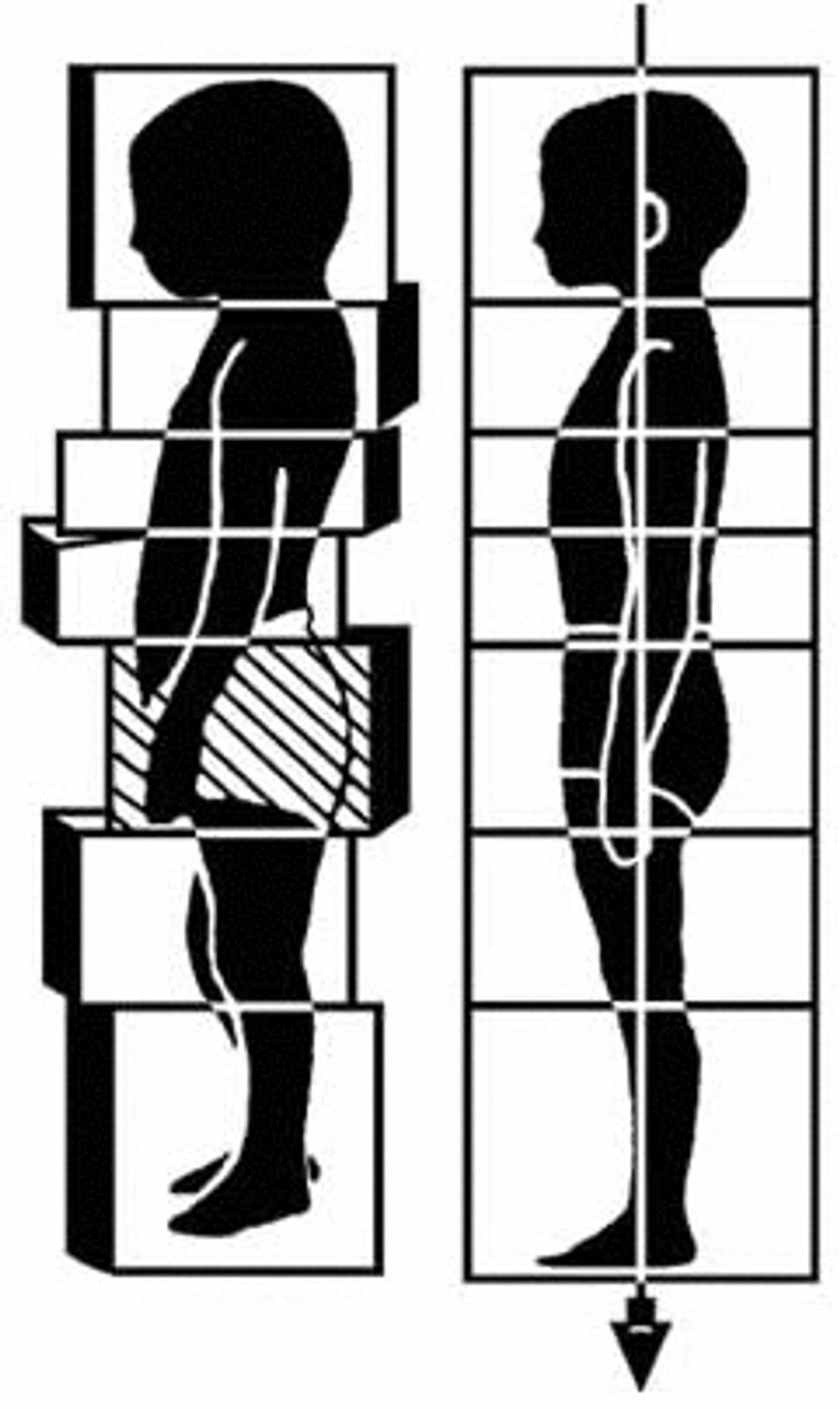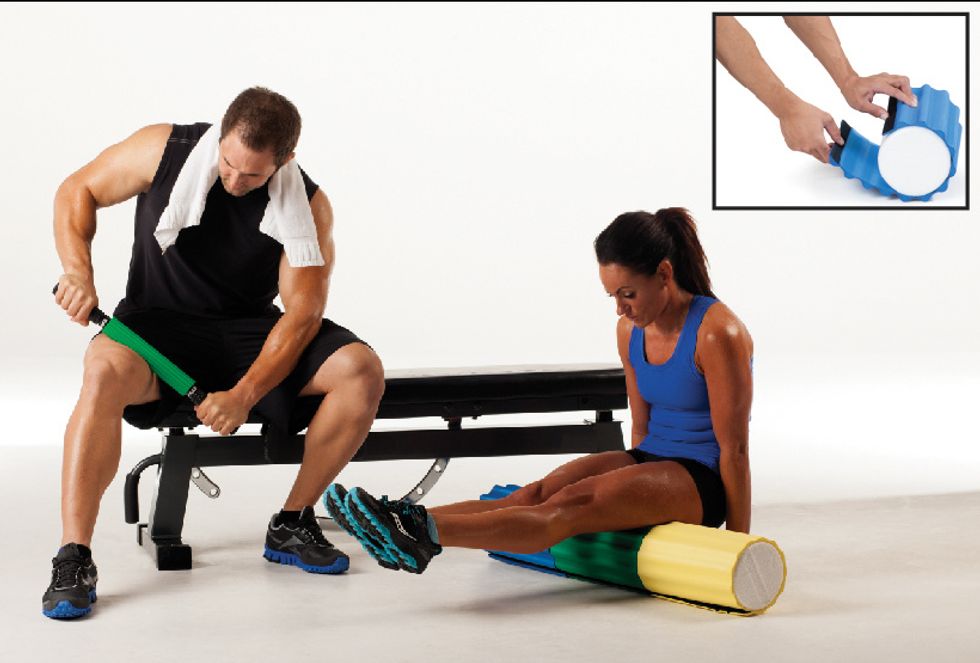Fascia is the new avocado toast, and like avocado toast, it’s both overhyped and wondrous. If you have been to yoga class or had a massage recently, surely you’ve heard someone talking about how fascia release can do everything from cure persistent migraines to shave years off your looks to unlock long buried trauma. Nevertheless, a scientific consensus on the existence of what some call a “new organ” is still a ways away. According to a recent article by experts Bruno Bordoni and Matthew Varacallo, published by the National Center for Biotechnology Information, “Researchers do not agree on one, comprehensive fascia definition.”
What they do agree on is that all structures in the body, like muscles and organs, are sheathed by a network of connective tissue. This means there is a single web that links everything from your head to your toes, which is why tight fascia in one part of the body can refer pain to another. Your fascia is adaptive and responds to the way you move, or don’t move. If you have ever sat in one position all day or remained hunched over a computer for hours and then felt 100 years old when you did stand up straight, then you know what contracted, sticky fascia feels like.

Perhaps part of why the medical community has been slow to embrace the concept of fascia is very simple: traditionally, it was physically stripped out of cadavers being dissected in med school anatomy classes in order to reveal the tissues underneath. But a walk down the aisle of the meat section of any grocery store reveals fascia to the naked eye; it’s the shiny, tough, whitish layer you see on an intact muscle such as lamb shank. The verdict is out on the ultimate purpose of fascia, but there is now promising research being done on how it responds to mechanical stress in real time, has a role in fibromyalgia, allows communication in the nerve, blood and lymph systems, and has a role in other important areas such as chronic fatigue and pain.
While science catches up, the best way to experience the benefits of working with your fascia is to try out a modality that has recognized it all along.
Myofascial Release Massage

If you are one of those people who never feels a massage goes hard enough, myofascial release might be your bodywork nirvana. This technique focuses on pressing into trigger points or knots rather than employing the classic stroking or kneading motions of Swedish Massage. Be prepared to feel some soreness afterwards.
Rolfing

For the even more daring (some would say masochistic), there’s rolfing. Developed in the 1920s by Dr. Ida Rolf, rolfing aims to soften up the fascia enough to get underneath it in order to manipulate even deeper physical structures. It distinguishes itself from deep massage by aiming to improve overall alignment, biomechanical efficiency, and balance, not just loosen up a single part of the body that may be experiencing tension or discomfort. You’ll need to commit to a series of ten one-to-two hour sessions. Rolfing is not recommended for cancer patients and check with your doctor if you have high blood pressure or suffer from another chronic condition.
Rolling

Using a foam roller or tennis balls to iron out and loosen up your fascia is something you can do at home. There are any number of videos to show you different techniques but rolling essentially consists of finding a tight spot and alternating between manipulating it in multiple directions and spending time there, applying gentle pressure to aid opening and release. There’s evidence that rolling can help improve athletic performance if used as a warm up and ease soreness after working out by increasing blood flow. Don’t be macho and use a lacrosse ball or hard foam roller, rolling too aggressively can cause bruising and tissue damage. There are certain fragile areas to avoid completely such as the lower back and bottom ribs. The Melt Method is particularly gentle and excellent for beginners.
Stretching

Yoga, pilates, and plain old stretching are good for fascia. Whole body stretches such as Downward Facing Dog are great because they expand the entire system in multiple directions, remember to never stretch to the point of pain.
Women’s health guru, Christiane Northrup, M.D., describes healthy fascia as a “Fountain of Youth.” She says smooth, supple fascia can boost energy, improve posture and coordination, and release difficult emotions. Sign me up.











